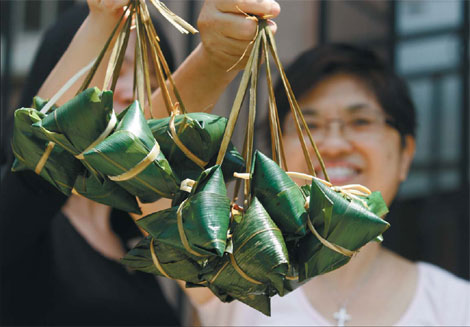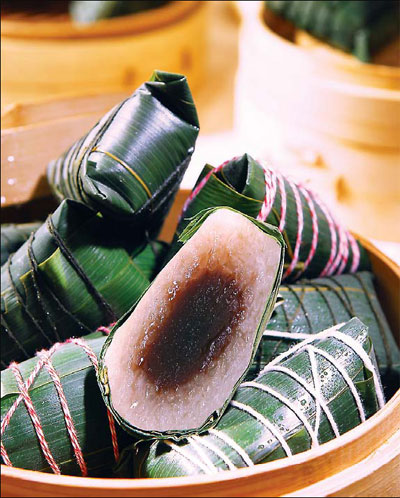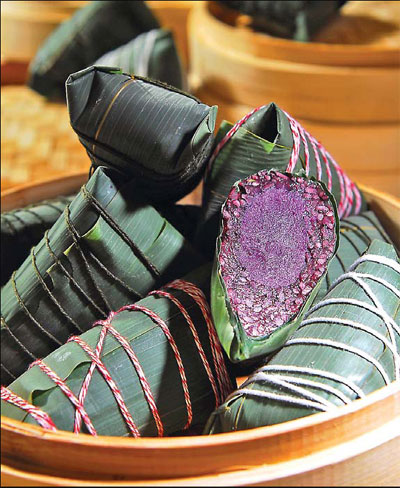
The centerpiece of Duanwu Festival - zongzi or rice dumplings - is always associated with family and culture. Pauline D. Loh / China Daily

Savory zongzi are usually filled with salted egg yolks, pork and chestnuts. Pauline D. Loh / China Daily

Red bean paste zongzi are typical of sweet dumplings eaten in the north.

A Din Tai Fung specialty dumpling made with purple rice and purple sweet potato.
The Chinese celebrate Duanwu Festival by eating rice dumplings of all shapes and sizes. For some who live in other countries, it is a yearly tradition, just as their relatives at home guard the culinary heritage of both taste and culture. Pauline D. Loh explores the links between heart and home.
Traditions become precious when they become the only links to ancestral roots and historical heritage. This has always been the case, especially for people who wander, and no one has gone further afield than the Chinese. That is the reason why Duanwu is now a global festival, celebrated on all five continents. Studies have shown that the strongest guardians of traditional Chinese festivities are often overseas Chinese communities. In Chinatowns from the United Kingdom to the United States, lion and dragon dances are colorful components of Lunar New Year celebrations, just as the rice dumplings, or zongzi, are made and eaten at Duanwu in almost every major city in the world.
In countries nearer home where the Chinese Diaspora first landed, the humble rice dumpling has evolved and incorporated local tastes. Sometimes it is even borrowed for local festivals. In Vietnam, for example, dumplings are eaten most often for Tet, the Vietnamese New Year.
Thailand, Cambodia, Laos and the Philippines all have similar or evolved versions of the rice dumpling, while in Malaysia, Singapore and Indonesia, they are so popular that zongzi are sold all year round, and prepared with local ingredients such as spices and chili.
Within China itself, regional varieties reflect local tastes and traditions, with savory dumplings popular south of the Yangtze River and predominantly sweet dumplings eaten in the north.
